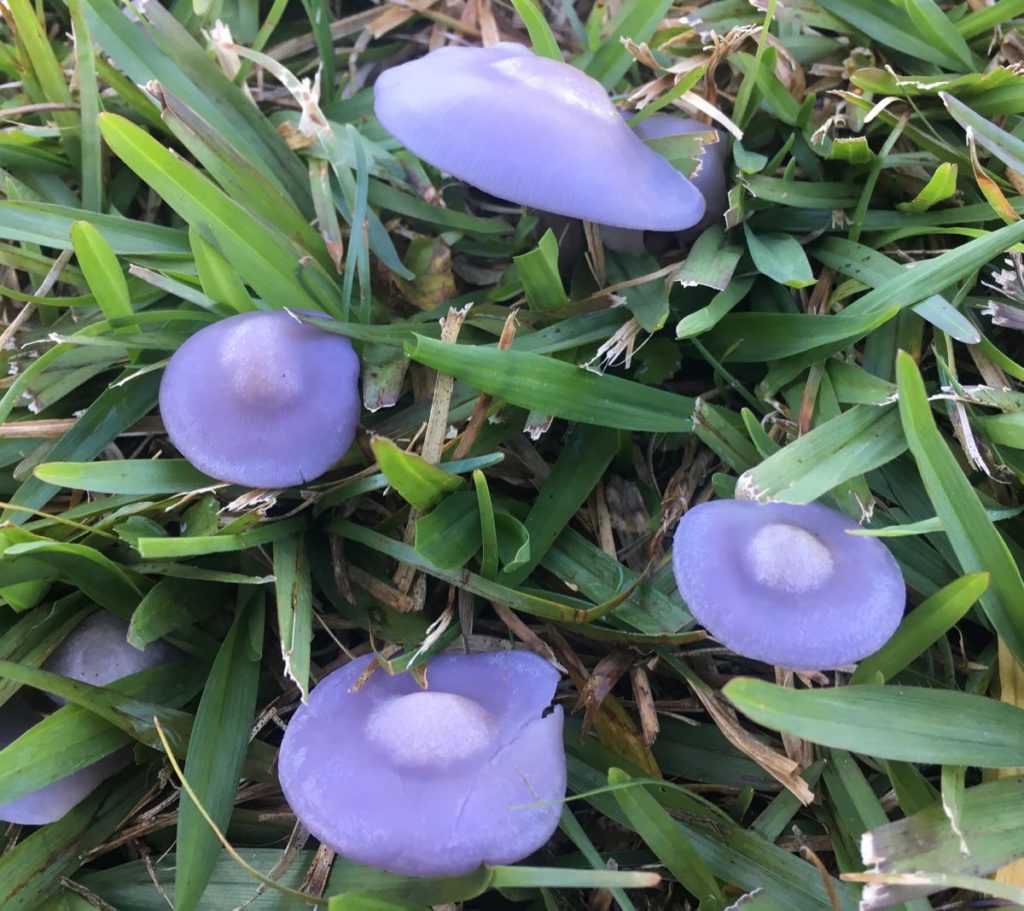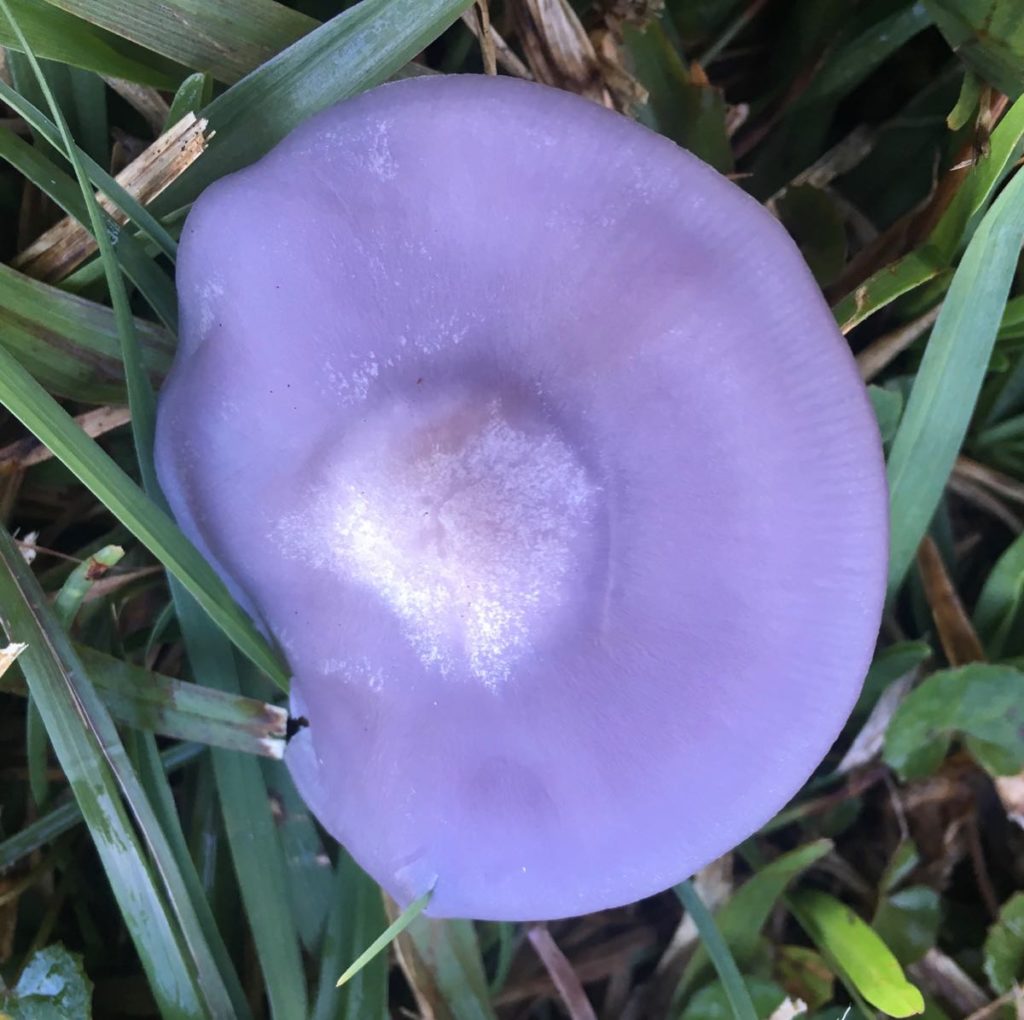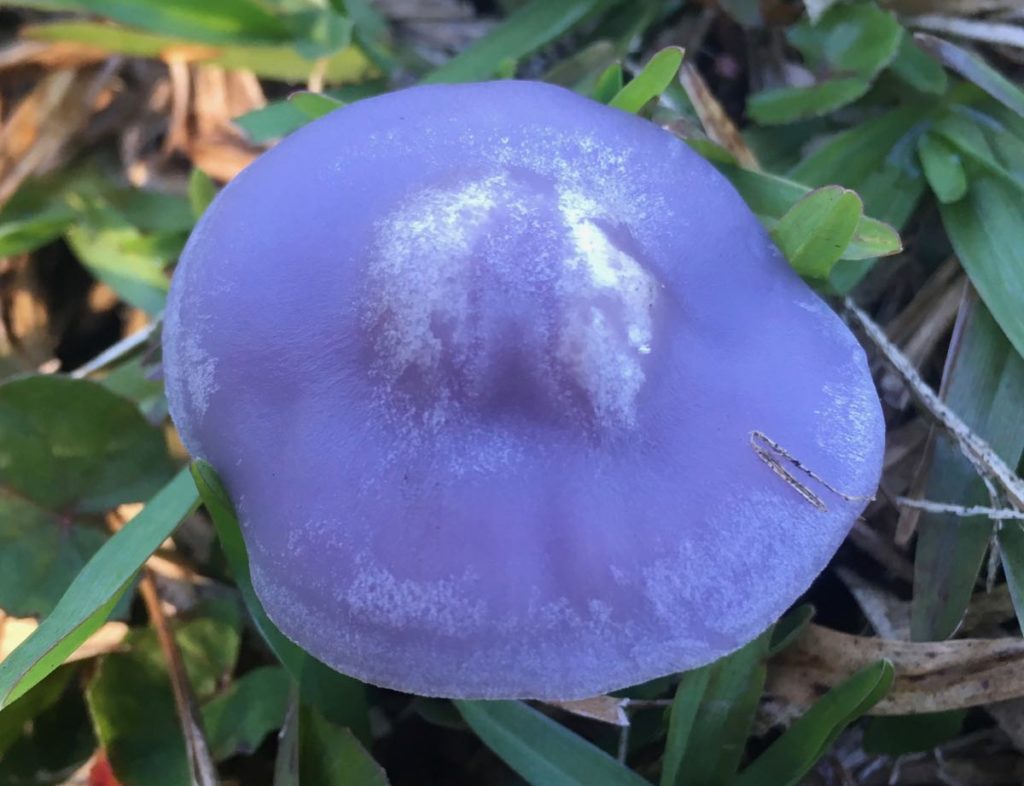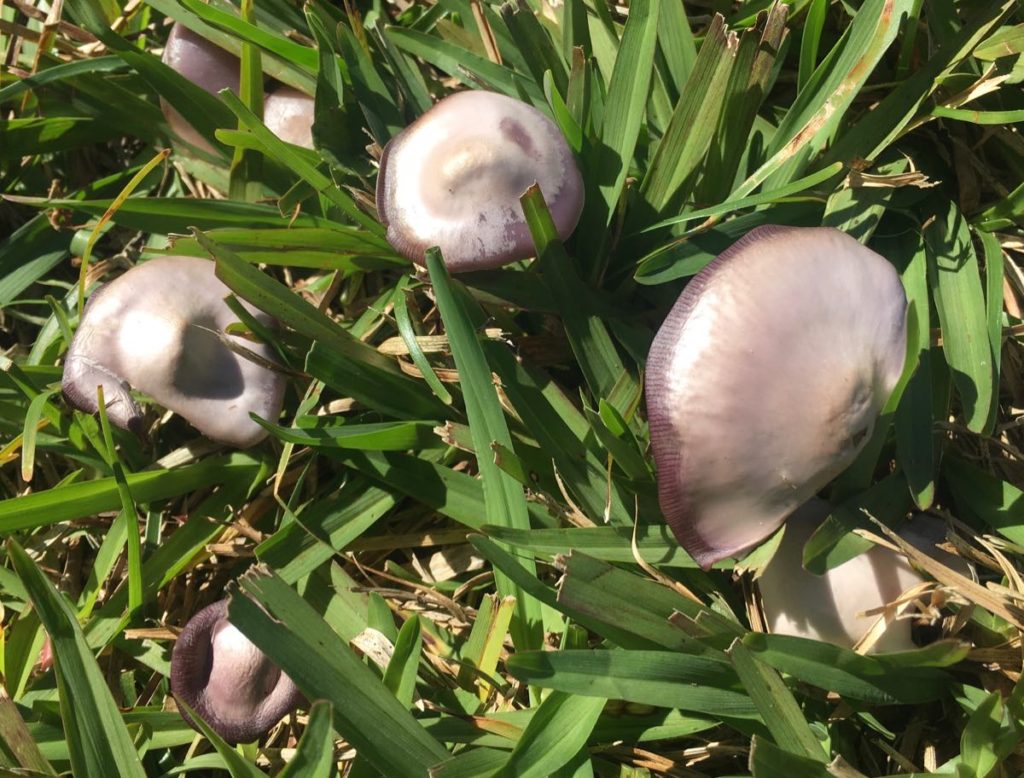On Saturday (10 July) I came across some rather spectacular bright purple fungi at the Village Green. There was only a small patch of these amazing fungi, poking up through the grass in deep shade. I can only suppose that the fungi might have popped up over night, because when I saw them in the early morning they looked fresh, bright and were vibrant in colour. They were easily spotted amongst the green grass. By next day and some 24 hours later, the fungi had faded to a dull brown-beige colour with only the merest hint of purple remaining around the very edge of the cap.


This website has featured many previous posts on the amazing diversity of fungi growing in and around the village – in various habitats from local gardens, along walking tracks and in deep rainforest. Checking these previous posts I can’t see any other examples of ‘purple fungi’ resembling those recently spotted on the Village Green. I did do a bit of googling in the attempt to identify these fungi, but being far from an expert, I gave up before too long. Can anyone help to identify these rather brilliant mauve mushrooms…..?



Text & Photos by Michele Bird

Thanks Michele for sharing your amazing find. I’ve never seen such beautifully coloured fungi. I asked Barry and Jenn Muir, very knowledgeable fungi enthusiasts who produce a fascinating newsletter “Cairns Fungi Foragers”. Barry said:
“My guess is Lepista sublilacina. The gills on Entoloma hochstetteri are much closer together and the stipe (stem) is much thinner. They also favour deep sandy soils, which doesn’t fit paluma very well. Lepista sublilacina seems to be very common this year and popped up in lots of places both at the start of the last wet, and in the out of season wet periods during the “dry” season. Fabulous, aren’t they.”
Barry and Jenn have written a super-helpful guide for photographing fungi for identification purposes that I can forward if you like. I’ll ask my Paluma friends if they have an email address for you.
Hi Julia, thanks so much for the information you have provided re the identification of this amazing fungi. I would love to have a copy of the guide for photographing fungi and I can share it with the many fungi enthusiasts at Paluma. I have replied to you offline with my email address. Thanks again and great to have your feedback!
Thanks Jamie for the identification and interesting information. I have added an additional photograph to my post (not included in the original post) showing the stem, basal root and a partial view of the undersurface of the cap. This might help to confirm your ID? Regards Michele
Hi Michele, This is a great find!! Blue (ish) mushrooms are not common. I have seen some with similar colour while track-clearing on the Blue Gum track but didn’t have a camera to take a photo. Based on the raised central part of the cap (umbo) I think this is likely to be Entolama hochstetteri.
Mushrooms are not easy to identify and there likely many new species around Paluma waiting for identification by a small and over-worked band of professional taxonomists in Australia. Some mushrooms can be identified from photographs, but the strong advice from those websites offering to help with IDs from photos insist that you also provide images of the undersurface of the cap as well as the stalk (stipe) and basal “root”. E. hochstetteri apparently has a blue stipe that turns bright yellow/greenish at the base. I encourage you and any other Paluma mushroom observers to take these extra photos and would be happy to assist in trying to identify them.
Entolama hochstetteri is also referred to as E. virescens (a Japanese species) on many web pages and there may still be some uncertainty over which name is most appropriate (or indeed whether it is a separate possibly undescribed species). If you care to do some further reading there is a very readable article in the Queensland Mycologist 12(2):5-8. It’s an unusually fun read with historical anecdotes as well as a brief diversion to discuss the national origin of Pavlova! In New Zealand, where the species was first described, the indigenous name for E. hochstetteri is called “Werewere kokako” which translates as “Kokako’s wattle” referring to the similarity in colour between the mushroom and the facial wattle of the Kokako, a native wattlebird, both of which are featured on the NewZealand $50 note.
Jamie